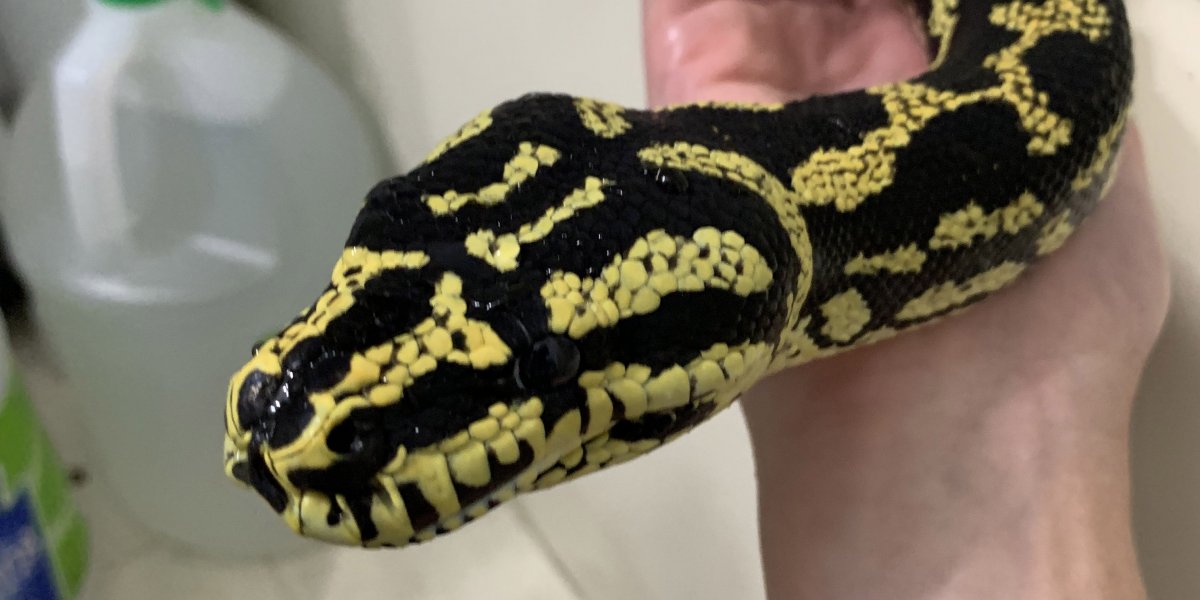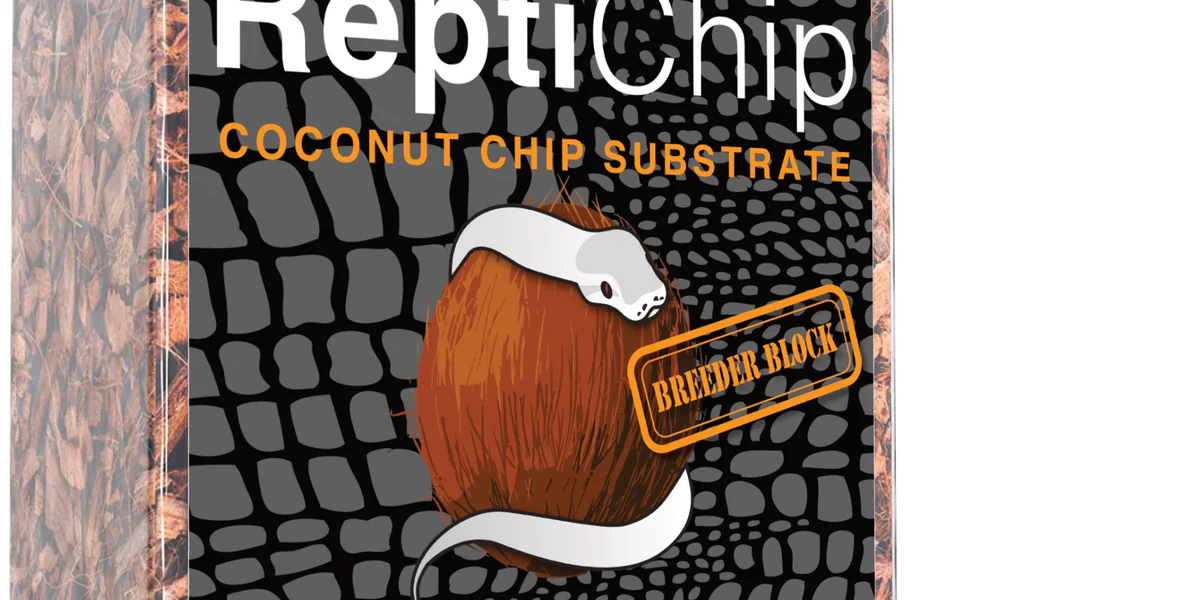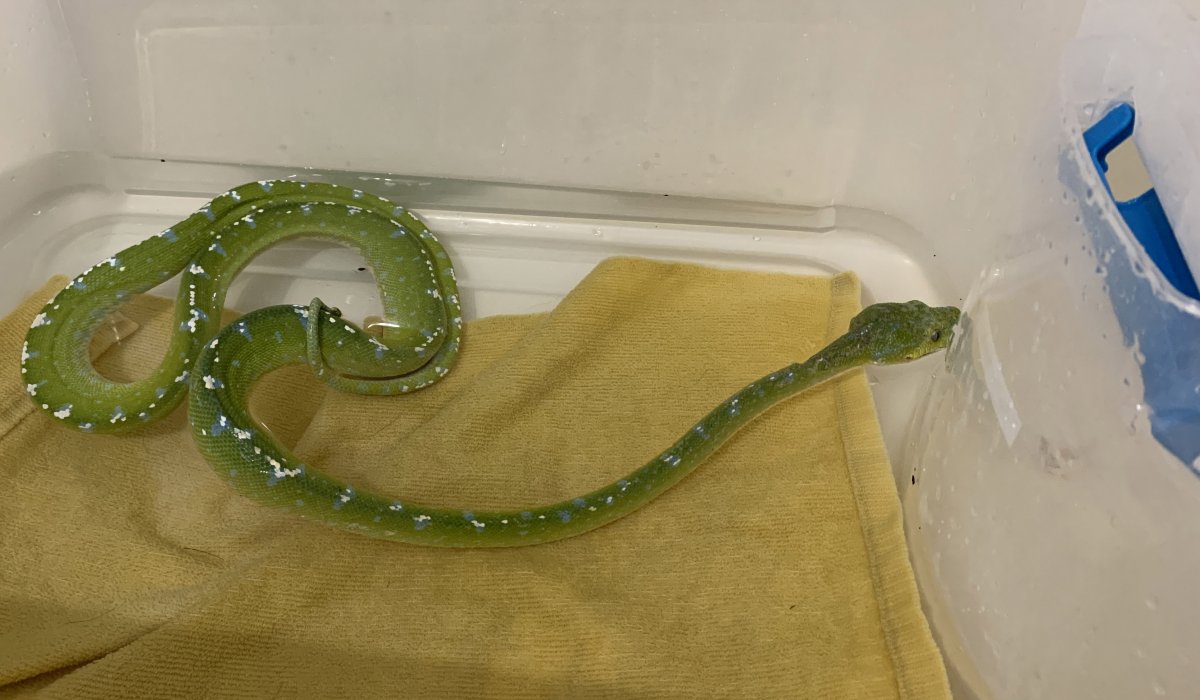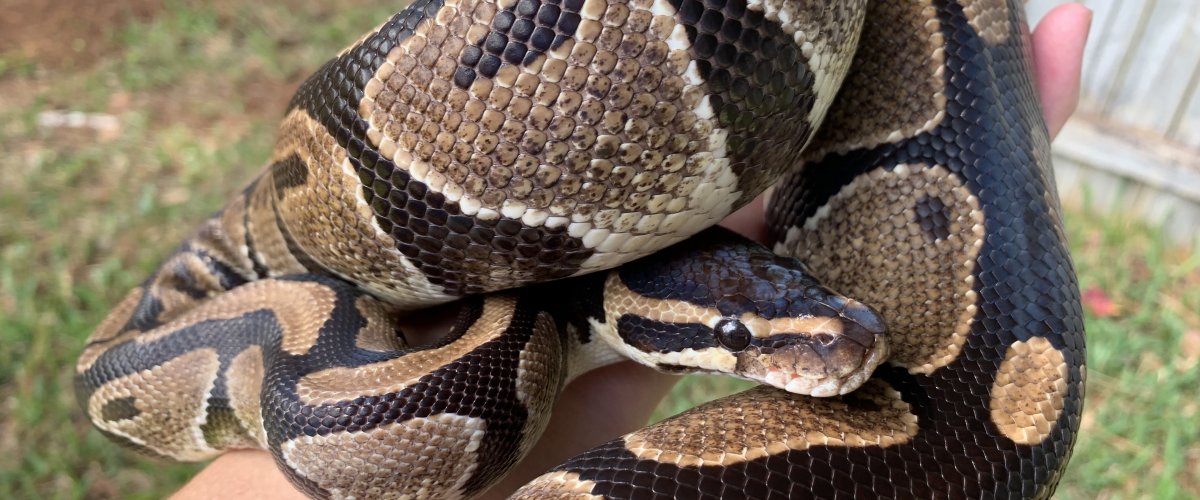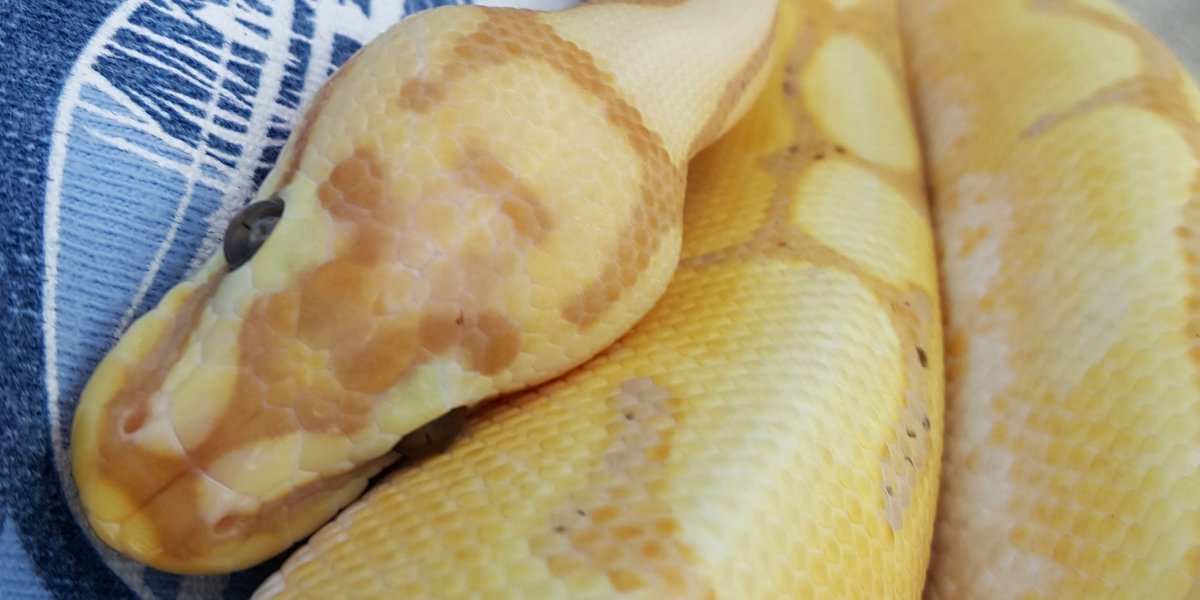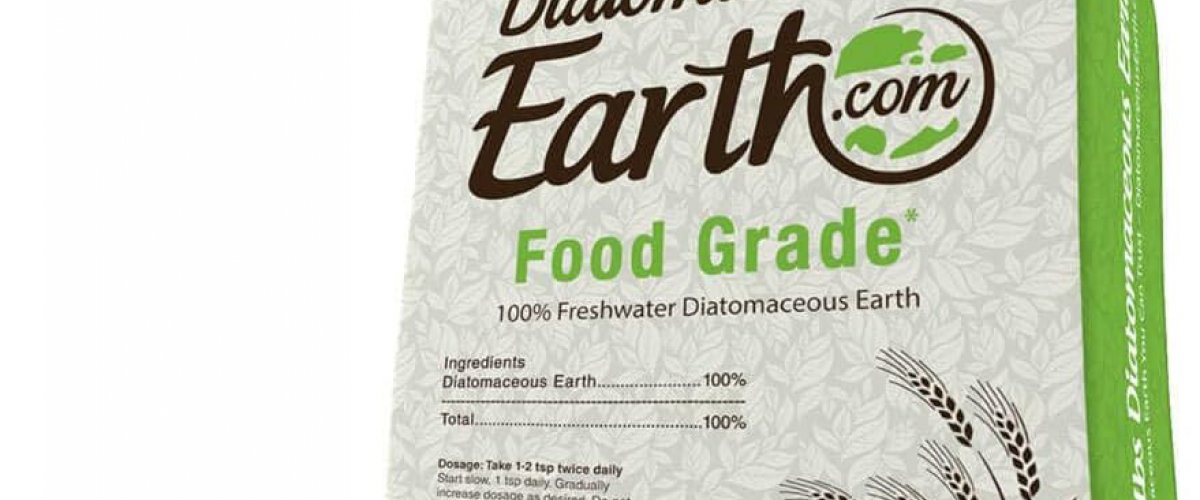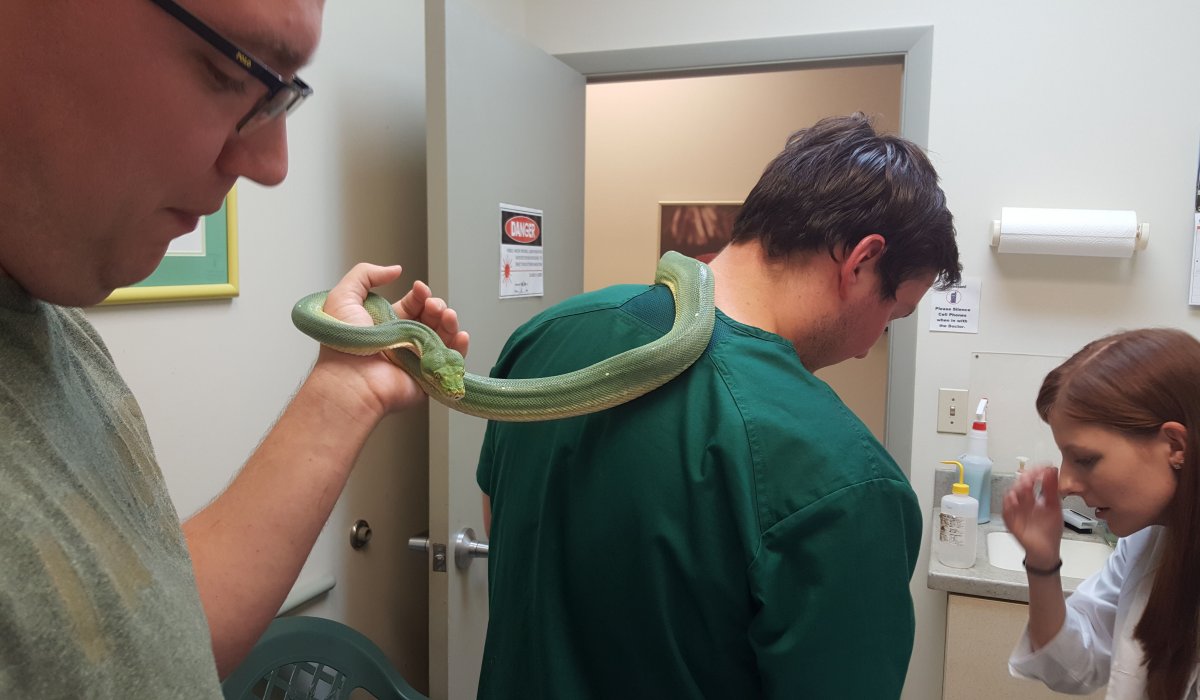DISCLAIMER: This site is for information only and is not a substitute for medical advice from a licensed veterinarian. If you think your snake may be sick, please bring it to a licensed exotic animal veterinarian immediately.
Mites and Snakes
Mites can be a very challenging problem for new and experienced reptile owners. If you are reading this and you’re worried about mites, the level of panic needed for the situation will vary, depending on the baseline health of the snake, how long it took to notice the problem, and how many snakes you have. In any case, mites are unwelcome news for anyone, and it is important to know about them. They can be a health concern for your animal and should be taken seriously and dealt with carefully.
The short answer is, that any time you have a medical problem with your snake, it is a good idea to see an exotic animal vet. However, we do have a few tips for dealing with mites.
First and foremost, DO NOT directly spray your snake with any kind of pesticide spray. This includes Provent-a-Mite (which tells you not to spray the animal right on the can), and any other pesticide-containing over-the-counter spray used for cats and dogs at the pet store. These sprays are, in fact, quite effective in killing mites, but they can also cause serious and permanent neurological issues for your animal. It is not worth it. Do not do it.
Now that’s out of the way…
What are snake mites?
Snake mites are parasites that feed on the blood of snakes. They can be seen on the snake as little black or red dots. They may cluster around the snake’s eyes or nose, or they may tuck themselves under a snake’s scales. A badly infested snake will have easily visible mites dropping off the animal and onto your hands when you pick them up. In an early infestation, you may not notice them at all.
Prolonged exposure to mites can cause health problems in an otherwise healthy snake. In a snake that is immunocompromised or already suffering from other health problems, mites can be particularly dangerous. It is important to balance the method of treatment with the strength and health of the animal.
Where do snake mites come from?
Most often, if you get mites, they probably came in on an animal or bedding from somewhere else. It is important to get your animals from a trusted source and quarantine them from any other animals in your collection when they first come into your home (I recommend 2-3 months, and longer if there is any indication during that time the animal might be sick). Always use clean, new bedding for your animals and be mindful of where your bedding is coming from.
Regardless of how trusted a source is, if it is a pet store or breeder continuously taking in animals from outside sources, there is a good chance that they will encounter mites at some point. How effective they are at quarantining the animals will affect you, too.
Dealing with mites
The first thing you want to do is find out if your snake actually has mites. A snake with mites could be spending a greater than usual amount of time in their water bowl—but then again, a snake whose humidity is too low or a snake going into shed might do the same thing.
To determine if your snake has mites, get a latching plastic tub (NOT airtight, but with a secure lid) and fill it with lukewarm water (80-85F) to a depth that is about the width of your snake. This way, if they sit in the tub the water will just cover their body and they can submerge fully if they want to. Let them sit for about 20 minutes. Next, pull them out of the tub and inspect the water. You are looking for little round dots, mites that have fallen off into the water. Note here that dirt/substrate tends to be irregularly shaped, and that makes it distinguishable from mites or other bugs.
Another thing you can do to check if your snake has mites is to remove all substrate from the enclosure and keep the snake on paper towels instead for a day or two. If there are mites, you can more easily see them on the paper towels. You can also check the snake’s water bowl if they have been soaking in it.
It is also worth mentioning that some substrates (even dehydrated blocks) may come in with soil mites. If you keep feeder insects on hand such as superworms or roaches, which eat grain-based foods, you may encounter grain mites. It is difficult to tell the different species of mites apart, but you can learn from them by observing where the mites seem to be coming from, and where they are spending their time. Soil mites may accidentally end up on a snake, but they won’t cling to and attack a snake. Grain mites will…well, spend much of their time eating grain. Some insects like springtails and fungus gnats aren’t mites at all. When in doubt, you can always dump the substrate and replace it with something else. However I prefer to be conservative when it comes to doing something directly to the animal. Change bedding, soak the snake in a tub, and reevaluate. If you are still seeing little dots, you may have a mite problem.
What if my snake has mites?
Again, this is something best done when partnered with an exotic animal veterinarian. And as a reminder, NEVER spray pesticides on your snake.
You can remove mites by soaking a snake in a latching plastic tub (as described above). After soaking for about 20 minutes, you can remove them from the tub, rinse them off and let them have a break in a clean, dry tub with paper towels. There are some non-toxic remedies you can use on the snake, like Natural Chemistry, that do not contain pesticides. These are fine. Make sure you follow the directions on the bottle. If you aren’t sure whether a spray has pesticides in it, don’t use it on your animal.
While the snake is out, you’ll want to thoroughly disinfect the enclosure. Remove all substrate from the enclosure. You’ll want to dispose of the substrate and any porous decorations (such as cork and other woods). You can use a water and bleach solution to soak and scrub any nonporous items in the enclosure, and the enclosure itself. Be sure to rinse everything thoroughly afterwards and let it dry completely. You may, at this point, make use of a spray like Provent-a-Mite for the enclosure and décor only. Make sure the water bowl is not in the enclosure when spraying. Be sure to follow the instructions on the bottle and make sure everything is completely dry before reintroducing the animal and water dish to the enclosure. Do not use Provent-a-Mite while in a room with snakes.
While a snake is being treated for mites, it is probably best to use a non-particulate bedding, such as paper towels. This will allow you to keep an eye out for mites and enable you to quickly dispose of and replace the snake’s bedding whenever it comes out for a soak.
You can re-soak your snake in water every 1-2 days. Fighting mites generally means keeping things dry, and higher-humidity snakes like ball pythons will benefit from the extra soaks. It also may bring some relief to the snake and give you the chance to watch for the mites that drop off. Make sure the snake is dry before returning to its enclosure. You may need to re-treat the enclosure (enclosure and décor only, with the snake removed from the area).
Food Grade Diatomaceous Earth
This is an interesting non-chemical tool for mites and other pests, and some reptile keepers swear by it. The concept is that the Diatomaceous Earth, or DE, wears away at the shell of bugs, causing them to lose moisture and ultimately killing them. I have personally noticed that many bugs tend to just avoid it entirely. However, using DE comes with its own risks, so make sure you read about it carefully before using it.
DE is a very fine particulate, and it can be harmful if inhaled in significant quantities, both to the snake and to sensitive humans. For this reason, I don’t personally recommend mixing DE into your substrate or using it inside the enclosure. Instead, we have used DE around the outside of enclosures when we were concerned about mites getting in. The idea is to create a physical barrier to discourage the mites from traveling to other areas. If you do use DE, I recommend applying it in a thin, fine layer with a dry paintbrush around the base/outside of the enclosure. The DE is effective only when it is dry. If you need to clean it up, wipe with a damp paper towel. Do not vacuum DE in large amounts (you can break your vacuum).
Mites and Veterinarians
Having a Veterinarian available can make your mite treatment more effective. I have seen Ivermectin used as an injection for snakes by veterinarians to make the snakes’ blood toxic to the mites so that they die more quickly. Again, never use any kind of pesticide without veterinarian direction. Please also note that ivermectin is highly toxic to tortoises in any form (I know this is a snake article, but we are all reptile friendly here).
Final Thoughts
Be patient with yourself while undergoing this process. Put the health of your snake first, and keep open communication with your veterinarian. Understand that the mites will probably not go away overnight, but keep at it until they do. Use any experience with mites as an opportunity to evaluate what comes in and out of your snake’s environment, so you can reduce the chance of encountering mites in the future. You got this!

